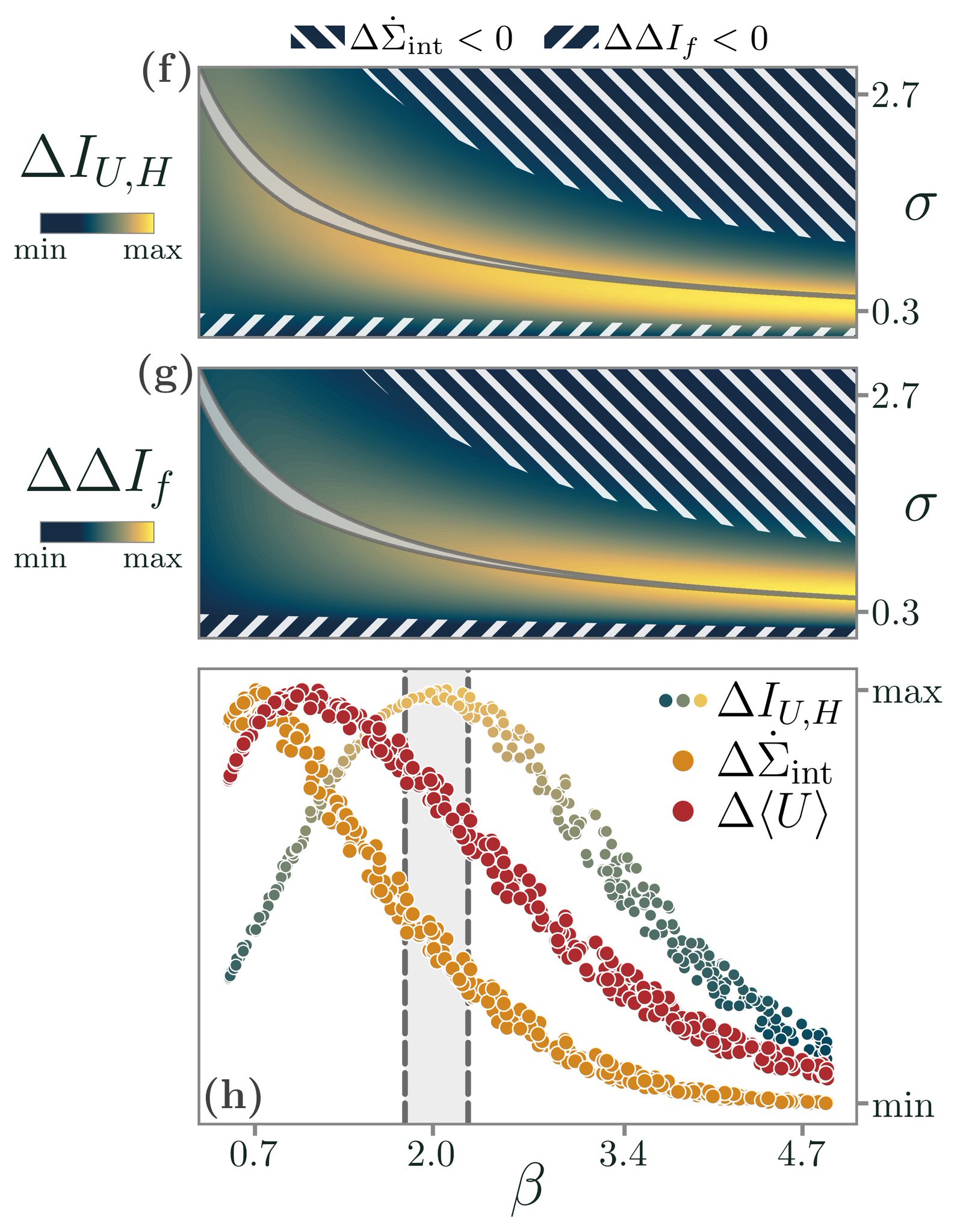Thread
Let me introduce our latest preprint: "The architecture of information processing in biological systems", a joint effort with @dbusiello1, @SamirSuweis at @LIPh_Lab, @mat_bruzz, and Marco Dal Maschio!
Link to the preprint and a thread👇
arxiv.org/abs/2301.12812
Link to the preprint and a thread👇
arxiv.org/abs/2301.12812
Biological systems process information at different scales and adapt to changing environments. But how do they do that? What are the minimal ingredients involved in information processing, and what are the physical principles that support it?
1/13
1/13
We propose a model for sensing that incorporates energy consumption, information storage, and negative feedback. Its biochemical architecture explicitly describes a receptor, a readout population, and a slow hidden population that regulates the receptor activation
2/13
2/13
This biochemical architecture is found at strikingly different biological scales, from chemotaxis to signaling networks. Further, it can be thought of as an archetypal description of neural response!
3/13
3/13
We solve the system in a timescale separation approach and show how a biochemical architecture enclosing these minimal mechanisms leads to a number of surprising and fundamental features
4/13
4/13
The hidden population acts as an information storage for the system, allowing it to modulate its response - encoded in the readout population - without losing information on the external signals
5/13
5/13
In other words: a biochemical architecture enclosing these minimal mechanisms leads to the emergence of dynamical memory and adaptation to changing environments. And adaptation has a clear advantage: it increases the information between the readout and the external signal!
6/13
6/13
But our architecture needs energy to activate and gather information! We show that optimal sensing of external environments emerges as a consequence of an information-dissipation trade-off: the more information you want to acquire, the more energy you need to dissipate
7/13
7/13
Adaptation helps to increase readout information - which is our system's response to external signals - and, at the same time, it reduces energy dissipation in the system
8/13
8/13
Our biochemical architecture, however, is capable of capturing the diverse and complex sensing mechanisms that operate at much larger biological scales. With the help of @mat_bruzz and Marco Dal Maschio's lab, we test our ideas in the context of neural adaptation
9/13
9/13
By coupling our architecture with a neutral-like model with stochastic neurons, we are able to replicate the core features of sensory neural adaptation that we experimentally observe in zebrafish larvae under repeated visual stimulation
10/13
10/13
Neural adaptation is captured by the low-dimensional features of the dynamics, both in data and in the model (where no explicit description of neural dynamics is present!)
11/13
11/13
Overall, in our framework we are able to compute explicitly all the relevant quantities for information processing, allowing us to identify the essential ingredients that make it possible
12/13
12/13
Along the road, we are able to understand the functional and thermodynamic advantages of adaptation in biological systems, and how it relates to memory and information storage
13/13
13/13
Mentions
See All
Luiz Pessoa @PessoaBrain
·
Apr 18, 2023
Check great thread:






